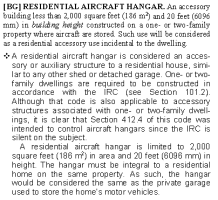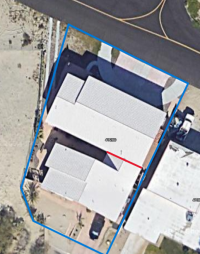Sifu
SAWHORSE
- Joined
- Sep 3, 2011
- Messages
- 3,439
This could go in either residential or commercial...
Residential development full of SFD's and several private aircraft hangers accessory to the SFD's, 2018 IRC/IBC. Single family dwelling, with a detached (or detached) building used as an aircraft hanger for a tail-dragger. IRC applies to "their accessory structures". So does a 3,000sf² attached garage used for a plane rather than an RV count as a SFD accessory structure?
IBC 412.4 has it's very own section for "residential aircraft hangers", which would limit the size to 2,000sf². However, if it is a residential accessory structure, how does a user even get to the IBC? If it is an IRC accessory structure, then what would an IBC residential aircraft hanger be? Is it accessory to a residential structure that is not a SFD? I think these would be IRC regulated accessory structures, same as an RV garage, but since the IBC has a specific section for residential aircraft hangers I am puzzled. I make the distinction between "private" and "not private", but the code doesn't seem to make the same distinction.
Residential development full of SFD's and several private aircraft hangers accessory to the SFD's, 2018 IRC/IBC. Single family dwelling, with a detached (or detached) building used as an aircraft hanger for a tail-dragger. IRC applies to "their accessory structures". So does a 3,000sf² attached garage used for a plane rather than an RV count as a SFD accessory structure?
IBC 412.4 has it's very own section for "residential aircraft hangers", which would limit the size to 2,000sf². However, if it is a residential accessory structure, how does a user even get to the IBC? If it is an IRC accessory structure, then what would an IBC residential aircraft hanger be? Is it accessory to a residential structure that is not a SFD? I think these would be IRC regulated accessory structures, same as an RV garage, but since the IBC has a specific section for residential aircraft hangers I am puzzled. I make the distinction between "private" and "not private", but the code doesn't seem to make the same distinction.


